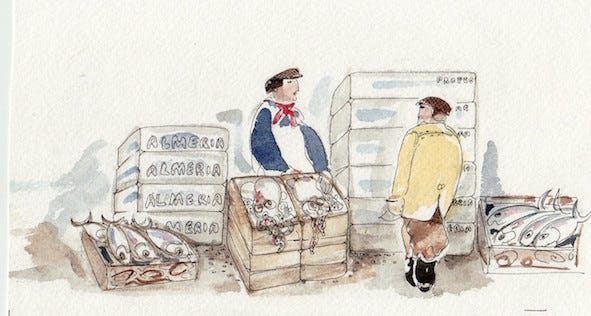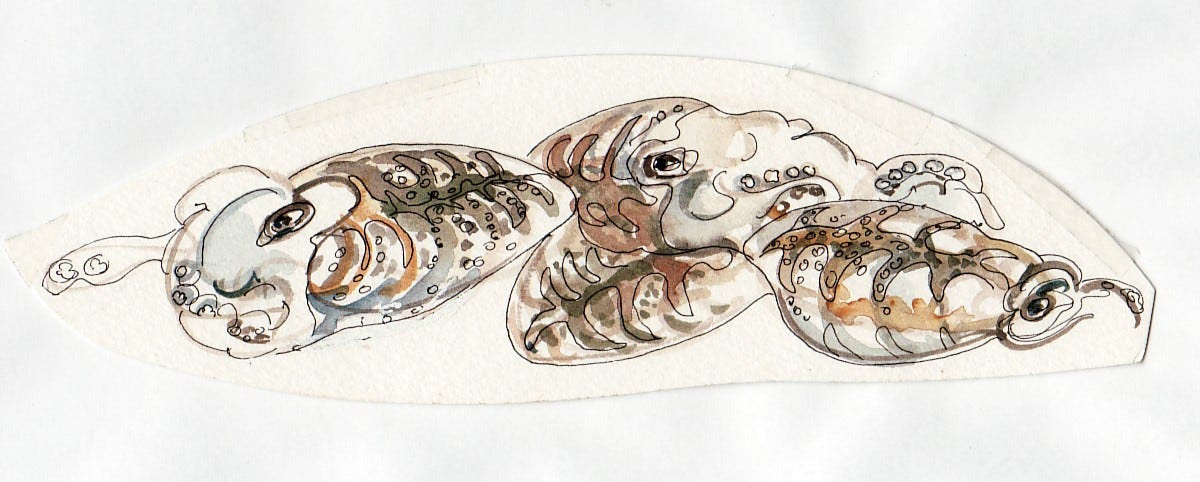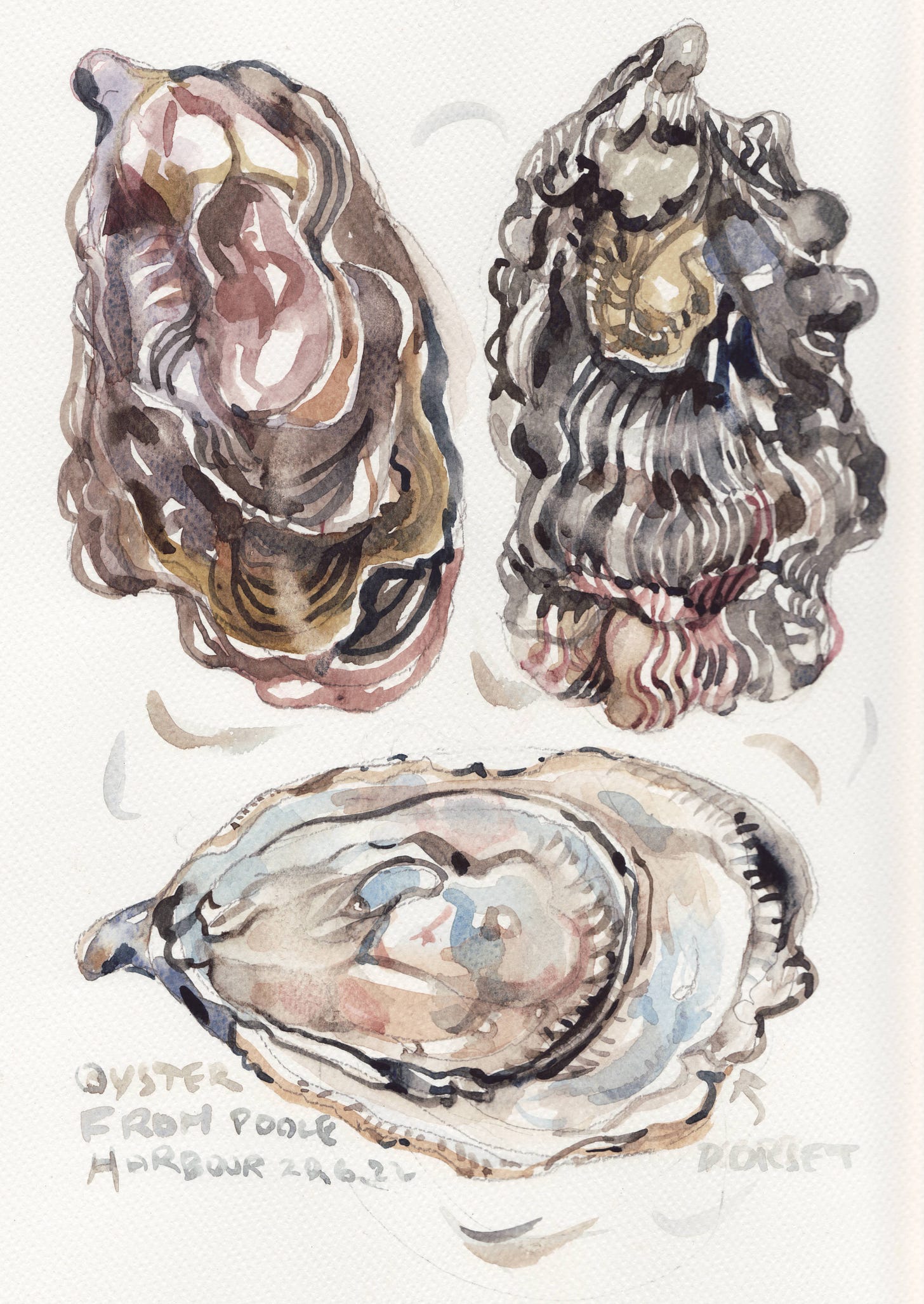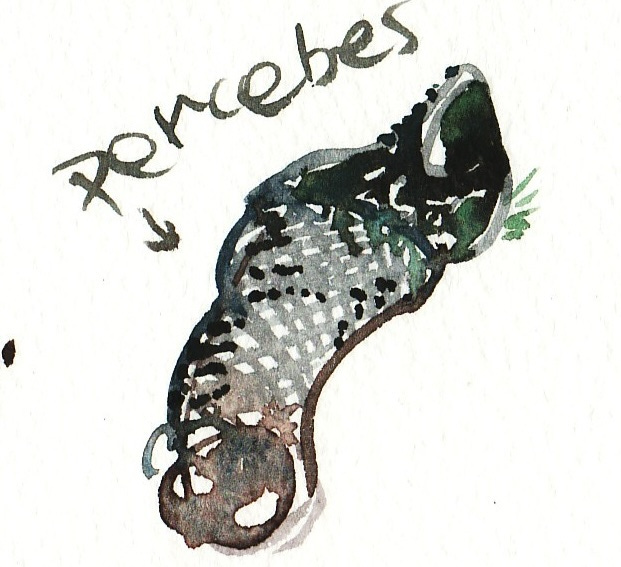I acquired a taste for goose-barnacles - and everything else that comes with mayonnaise - by trawling the tideline on the beach in Zarauz, a fishing harbour in Guipuzcoa, Basque Country in northern Spain, just along the coast from San Sebastian, official summer residence of Generalissimo Franco and his government in the 1950’s (and possibly beyond) along with the entire diplomatic corps, my stepfather and mother among them. Diplomatic dependents - children, nursemaids nannies and the like - were billeted at a safe distance, owing to the frequency of bombings by Basque Separatists and others.
I had just turned thirteen and was already developing a keen interest in anything that could be brought home in a bucket, popped in a pot and eaten - particularly with mayonnaise. My brother and I were under the care of Nanny, a feisty, blue-eyed, ginger-haired lass from Aberdeen. I loved her with all my heart - diplomatic children were sent to boarding school and didn’t often see their parents.
Nanny, Mary Agnes Pocock of Aberdeen, had a deep distrust of anything had little squinty eyes, far too many legs and could give you a nasty nip. And anyway, Nanny already had her hands full with a newborn baby and her four-year old brother - so she sent my bossy older brother and me on unsupervised outings to the beach to look for treasures in the rockpools and keep ourselves out of trouble.
Lunch was always a challenge. On the menu in Nanny’s favourite cafe was whatever hadn’t been sold by the fishermen when they’d sent the valuable stuff - tuna, bonito, hake, prawns, lobster - to Madrid or Malaga or Seville. After the locals had taken their pick of the rest - sardines, anchovies, mackerel - what was left was either dropped into an enormous boiling pot in the lean-to at the back of the cafe, or smacked straight onto la plancha, a heavy iron plate set on a gas-burner behind the bar.
Nanny always chose papas fritas - chips - and ate them with Heinz tomato ketchup and a glass of txakoli, the year’s vintage of white wine, still a little fizzy, poured with admirable accuracy from a great height by a handsome, dark-eyed, curly-haired bartender. Everything else - spider-crabs, cuttlefish, squid - came in a sauce flavoured and coloured with its own ink and as much as you wanted of torpedo-shaped bread rolls, bolillos, and a jug of gaseosa con tinto - fizzy, sugary water with enough red wine, a little sharp and vinegary, to colour it pink.
Percebes, goose-barnicles - I’m told that they’re now one of the most expensive seafoods on the planet - turned up regularly in the hanks of seaweed that rimmed Zarauz’s shoreline after storms. Commercially, they’re gathered in cold Atlantic waters with great difficulty and danger from rocks at the base of steep cliffs. Delicious as they are, their value, in the days before refrigeration, depended on longevity. All shellfish - oysters, mussels, clams - could be sent to distant markets and sold for high prices when kept cool and damp for as long they can keep water in their shells.
To prepare goose-barnacles for the pot, should any happen to come your way (watch out around rocky outcrops in clean cold waters, though most of those sold in Spain and Portugal are now gathered from the Atlantic coast of Morocco), rinse, place in a roomy pot, cover with cold salted water and bring to the boil for no more than two minutes. Allow to cool, then use your teeth (or any other sharp instrument) to nip a hole in the scaly little trunk and peel or suck out the flesh and catch it before it runs down your chin. Eat with mayonnaise, or just as you please. The flesh is firm, salty and a little sweet, with a flavour and texture much like lobster-claw, but chewier.
Fortunately for my gastronomic education, Nanny didn’t mind what her charges ate (though she found percebes a little - er - indelicate) as long as she didn’t have eat it herself. Best stick to what you know, such as the empanada gallega, a pastry-enclosed fish-pie added to her daily repertoire, that came with another little glass of txakoli poured with his customary skill the handsome young bartender. “They all go wild for my auburn hair,” said Nanny - and I very much hope it was true.
p.s. Beloved paid subscribers (you know who you are!) will shortly be in receipt of a recipe for Galicia’s empanada de atun, a hand-held pastry-enclosed tunafish pie sold by the slice in every respectable bakery throughout the region.













Such memories! In the tasca on the ground floor of our apartment in Madrid, 1966, chilly autumn night, rain coming up, baby tucked asleep four floors above us, I saw percebes for the first time. Elephant claws, I thought. And then I tried them, and was totally won over. By the handful with a small glass of cerveza, not txakolit (it came later). A half century along, in a posher than posh seafood restaurant, still in Madrid, they were as costly as gold. Still delicious, delightful, but no longer something to munch by the handful with a small glass of cerveza or anything less than a pricey Rias Baixas Albariño. Thanks for the memories, Elisabeth--it's always such a treat to read you!
We bought goose barnacles from the fabulous fish markets in Portugal where those in the know told us to cook them in sea water, or not at all!